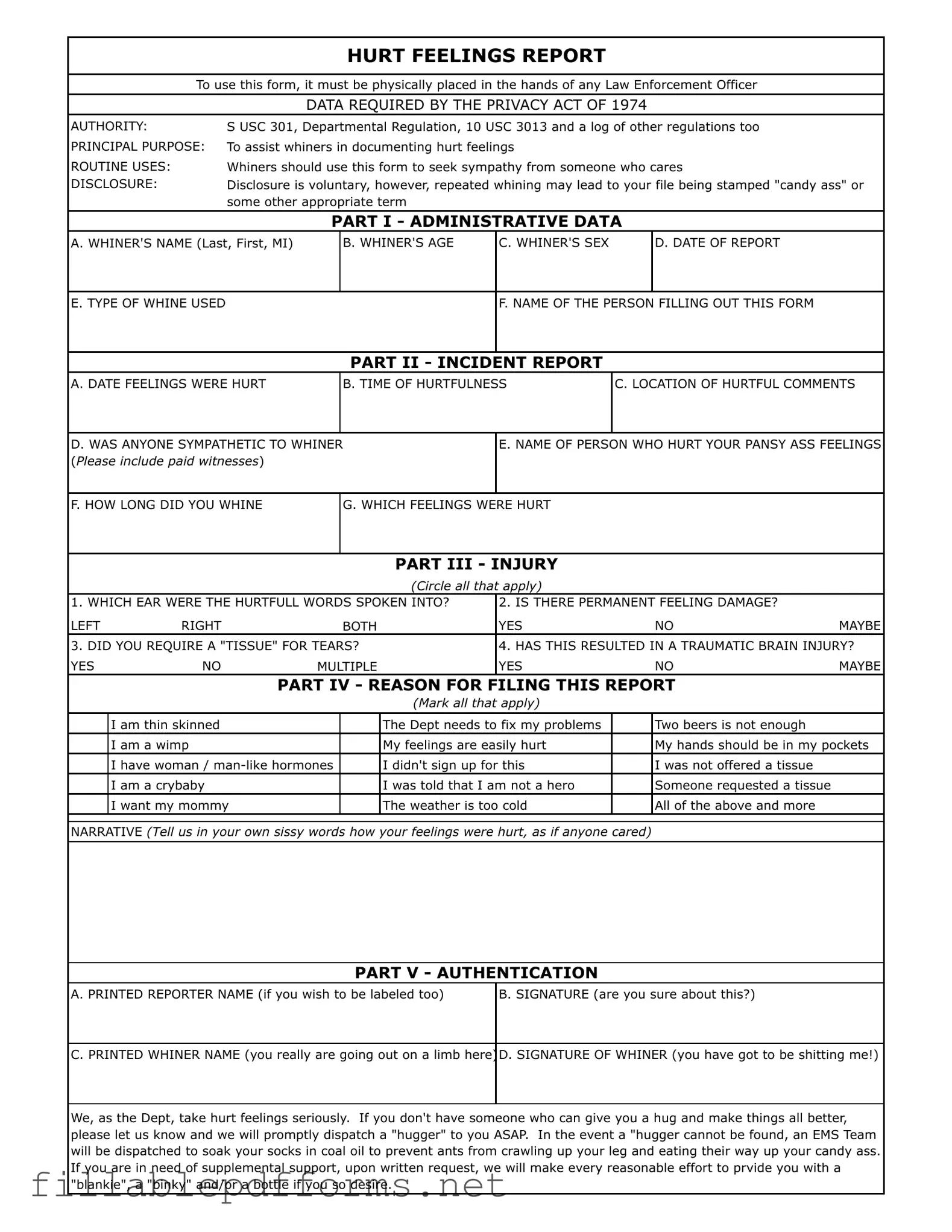The Hurt Feelings Report form serves a unique purpose within the realm of emotional expression, particularly for those who feel wronged or slighted. Designed to be submitted directly to a law enforcement officer, this form allows individuals—often referred to as "whiners"—to document their emotional grievances in a structured way. It requires basic personal information, such as the whiner's name, age, and the specifics of the incident that caused their distress. The form delves into details like the date and location of the hurtful comments, as well as whether any sympathetic witnesses were present. Additionally, it includes a section to assess the severity of the emotional injury, asking questions that range from the physical impact of the hurtful words to whether a tissue was needed for tears. The report encourages individuals to articulate their feelings in a narrative format, inviting them to express their hurt in their own words. While the process may seem lighthearted, the form underscores the importance of addressing emotional well-being, offering a tongue-in-cheek approach to a serious subject. Ultimately, it aims to provide support for those who feel overlooked, ensuring that no one has to navigate their hurt feelings alone.
